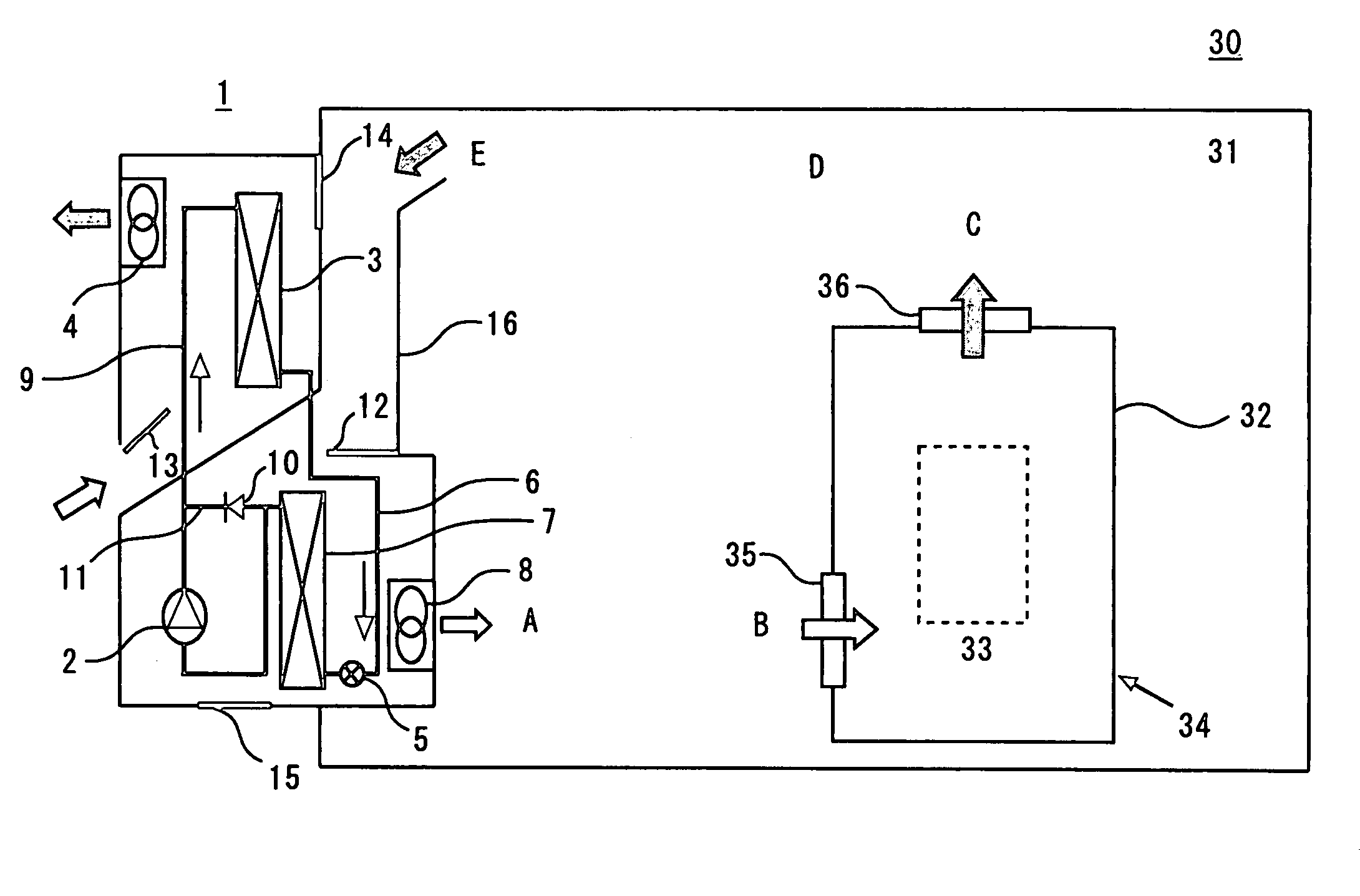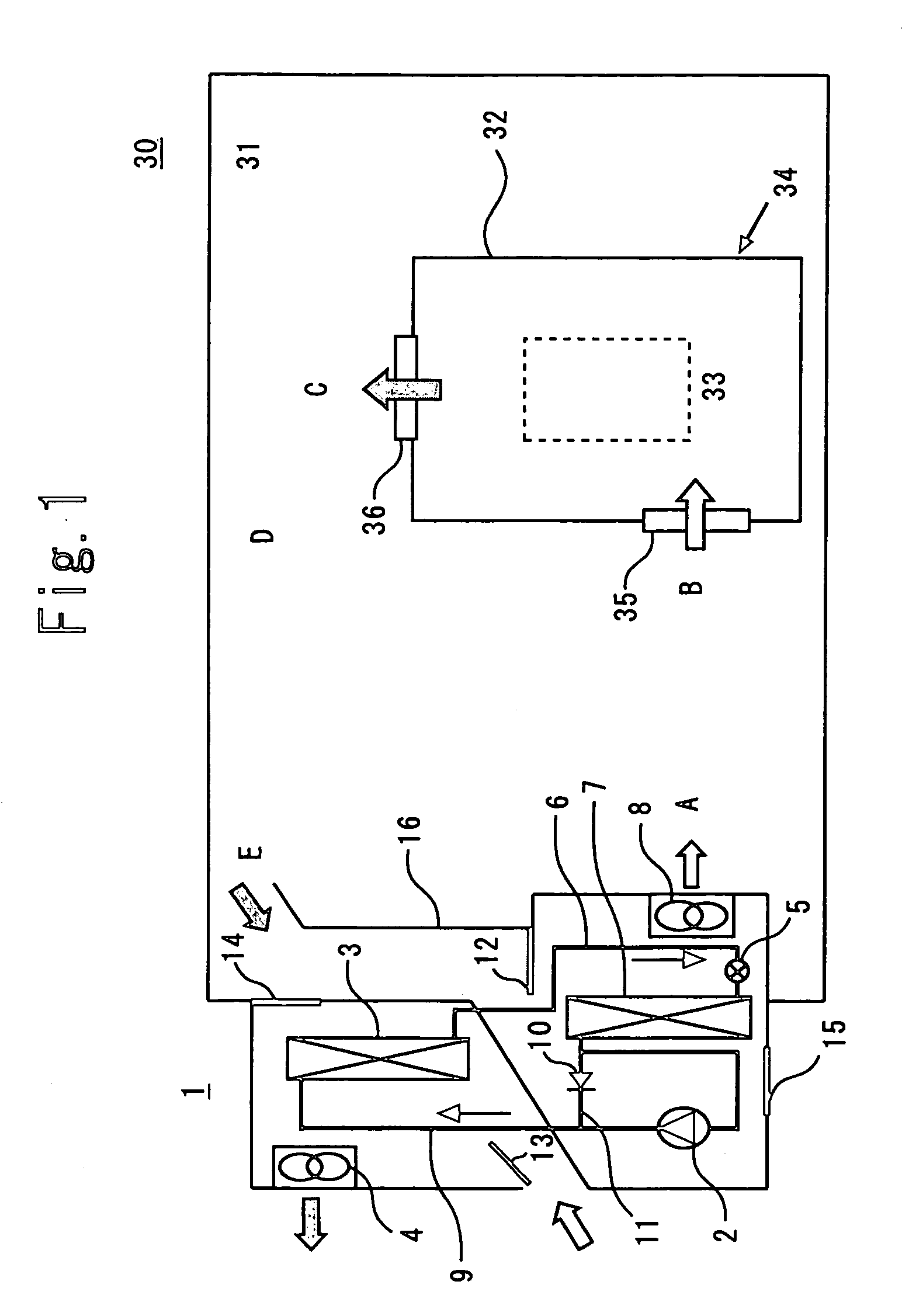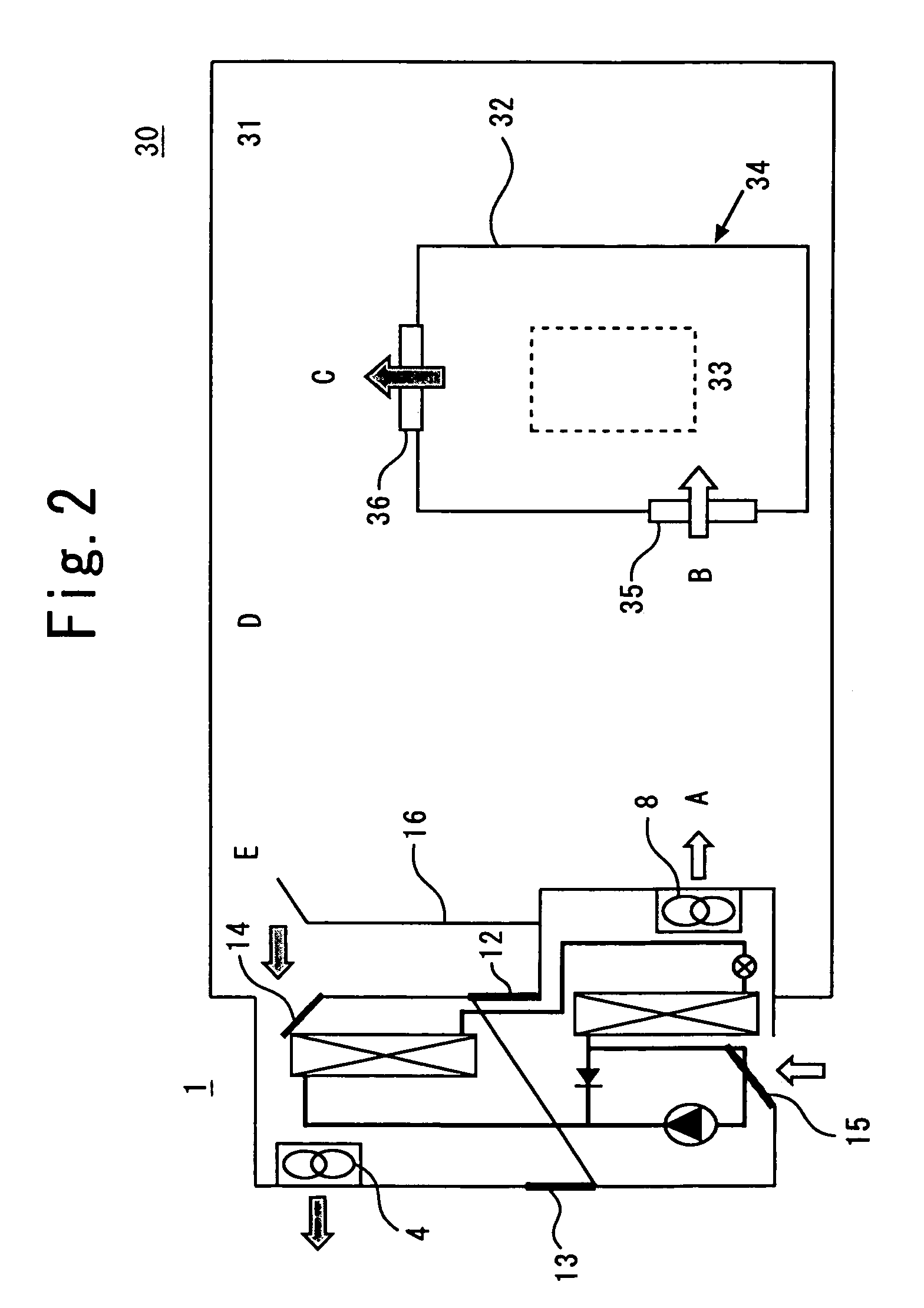Cooling device
a cooling device and cooling device technology, applied in the field of cooling systems, can solve the problems of increasing the internal temperature of the enclosure, affecting the efficiency of cooling devices, so as to reduce the number of equipment installed, reduce the time, and simplify the setting work
- Summary
- Abstract
- Description
- Claims
- Application Information
AI Technical Summary
Benefits of technology
Problems solved by technology
Method used
Image
Examples
first embodiment
[0038]FIGS. 1 and 2 are schematic block diagrams showing a cooling system according to a first embodiment of the invention. FIG. 1 shows a refrigerant forced circulation mode and a refrigerant natural circulation mode; that is, an operating state in a non-ventilation mode. FIG. 2 shows an operating state of the cooling system in a ventilation mode.
[0039]Throughout the drawings, reference numeral 1 designates a cooling system; 2 designates a compressor; 3 designates a condenser; 4 designates an outdoor fan; 5 designates an expansion valve, e.g., an electronic expansion valve; 6 designates a liquid pipe; 7 designates an evaporator; 8 designates an indoor fan; 9 designates a gas pipe; 10 designates an open-close valve, e.g., a check valve; and 11 designates a compressor bypass pipe. Reference numeral 12 designates an indoor air inlet port; 13 designates an outside air inlet port; 14 designates a ventilation indoor air inlet port; 15 designates a ventilation outside air inlet port; and ...
second embodiment
[0060]FIGS. 3 and 4 are schematic block diagrams showing a cooling system of a second embodiment of the invention. FIG. 3 shows the refrigerant natural circulation operation and the refrigerant forced circulation operation; that is, the non-ventilation operation. FIG. 4 shows a ventilation operation. In FIGS. 3 and 4, those elements which are identical with or correspond to those shown in FIG. 1 are assigned the same reference numerals, and their detailed explanations are omitted.
[0061]Throughout the drawings, reference numeral 17 designates a controller; 18 designates an outside air temperature sensor serving as first temperature detection means; 19 designates a room temperature sensor serving as second temperature detection means; 20 designates temperature detection means; 21 designates a fireproof damper; 22 designates a fireproof damper; 23 designates an intake hood; 24 designates a blowout hood; and 25 designates a battery.
[0062]The cooling system 1 is equipped with the control...
third embodiment
[0077]FIG. 7 is a schematic block diagram showing a cooling system according to a third embodiment of the invention. In FIG. 7, those elements which are identical with or correspond to those shown in FIG. 1 are assigned the same reference numerals, and their detailed explanations are omitted.
[0078]As shown in FIG. 7, the cooling system of the embodiment is separately equipped with a refrigerant circuit for refrigerant forced circulation operation and a refrigerant circuit for refrigerant natural circulation operation. The two refrigerant circuits share the outdoor fan and the indoor fan.
[0079]Operation of the cooling system will now be described by reference to FIG. 8.
[0080]According to the chart shown in FIG. 8, the cooling system performs control operation on the basis of the temperature obtained by the outside air temperature sensor (not shown) and the room temperature sensor (not shown). Specifically, when the temperature of the outside air is higher than the room temperature, t...
PUM
 Login to View More
Login to View More Abstract
Description
Claims
Application Information
 Login to View More
Login to View More - R&D
- Intellectual Property
- Life Sciences
- Materials
- Tech Scout
- Unparalleled Data Quality
- Higher Quality Content
- 60% Fewer Hallucinations
Browse by: Latest US Patents, China's latest patents, Technical Efficacy Thesaurus, Application Domain, Technology Topic, Popular Technical Reports.
© 2025 PatSnap. All rights reserved.Legal|Privacy policy|Modern Slavery Act Transparency Statement|Sitemap|About US| Contact US: help@patsnap.com



